Kumamoto Japan  SUMMER TRAVEL LOG vol.2
SUMMER TRAVEL LOG vol.2

Logged by Garth “Kakeru” Crouch
A travel writer and translator who explores “off the beaten path” Japan.
Kumamoto Food Culture
OVERVIEW
Thanks to its fertile volcanic soil, abundant underground water supply from Mt Aso, and the Ariake Sea that lies to the prefecture’s west, the food culture of Kumamoto is rich and diverse. While there are many local specialties that can be found across Kumamoto, I’ll describe some of the more well-known dishes.
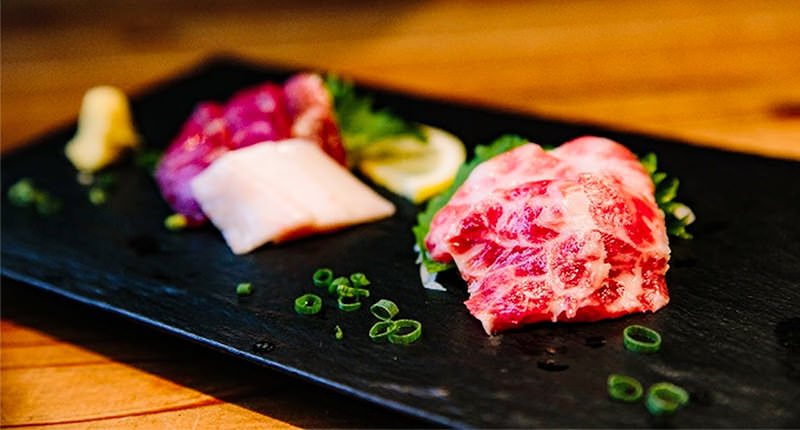
Baniku --- Horse meat
In Japan, horse meat is synonymous with Kumamoto. While horse meat is also a delicacy in other parts of Japan, Kumamoto is number one in terms of horse meat production, and the culture of eating horse meat in Japan was said to have been started by a feudal lord here in Kumamoto. Horse meat, or baniku in Japanese, can be found anywhere from specialist restaurants to local izakayas.
While consumption of horse meat is rare in English speaking countries, it is not unique to Japan, with countries across Europe, Asia, and parts of South America traditionally consuming horse meat. The meat is high in vitamins and minerals, and low in cholesterol making it a healthy meat option.
Just like any other meat, horse meat can be served in many ways, like on skewers or in hot pots, but basashi (raw horse meat) is particularly popular. It’s often eaten together with grated garlic, ginger and soy sauce, or as sushi. People often describe horse meat as tasting somewhere between beef and venison.
Just like any food, horse meat isn’t for everyone, but it is a big part of the local food culture, so just remember to be respectful.
Interesting fact: horse meat in Japanese is called baniku, but it is also colloquially called sakura niku, which basically means “cherry blossom meat”. Several theories as to how horse meat came to be called sakura niku include the colour of the raw meat, and the season that was said to be best for eating horse meat was spring.

Kamitori Shopping Arcades --- Kumamoto City
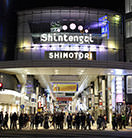
Shimotori Shopping Arcade --- Kumamoto City

Karashi Renkon --- spicy lotus root
One of Kumamoto’s most famous foods is karashi renkon. Renkon (called lotus root in English) is the rhizome of the lotus flower. It’s a popular vegetable in Asian cuisine and can be cooked in a number of ways, like renkon chips (crisps).

Karashi, spicy Japanese mustard, is mixed into miso paste and then stuffed into the holes that naturally occur in renkon. The renkon is then battered in a mixture made of flour and egg yolk before being fried in oil.
Karashi renkon has a crisp crunchy texture and the generous amounts of karashi will give you that same punch to the nose as a good hit of wasabi does.

The dish is said to have first been created as a way of providing nourishment to a feudal lord who was sickly. The appearance of karashi renkon after it’s been sliced was also thought to resemble the crest of the ruling House of Hosokawa, and it’s also said that this is another reason why the dish was kept a carefully guarded secret.
These days, karashi renkon is a favourite among Kumamoto locals and also by those visiting from other prefectures. It’s great to have on the side with lunch or dinner, but it also makes a fantastic snack to have with alcohol!
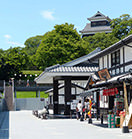
Sakuranobaba Johsaien --- Kumamoto City
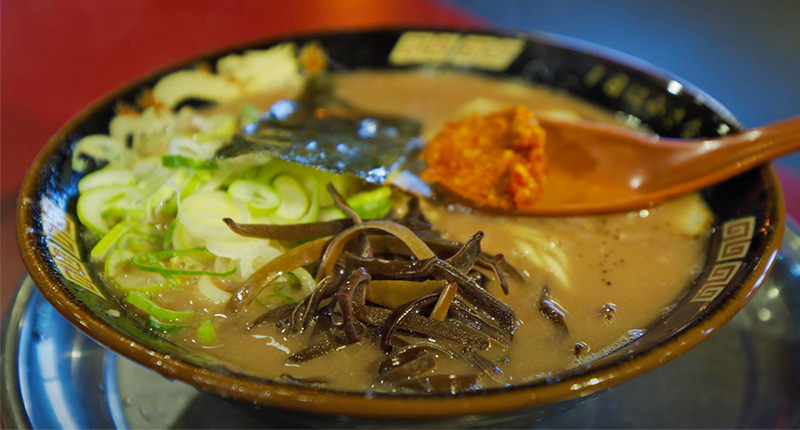
Kumamoto Ramen
Ramen is famous in Kyushu, and the broth is one of the major elements of it being so popular. While the broth is generally made using pork bones, here in Kumamoto, chicken bones are also often added to help give the stock an even more mild and pleasant taste. The result is a creamy soup, packed full of flavour but without any harsh pork bone aftertaste.
It’s not all about the broth though. Kumamoto also has its own style of ramen noodles, with firm, straight noodles of a medium thickness being the standard.
Another distinct feature of ramen in Kumamoto is the addition of fried garlic chips and mayu (burnt garlic oil made for ramen), which is generously poured on top, creating that irresistible Kumamoto ramen flavour.
Dago jiru --- dumpling soup
Dago is the word for “dumpling” in the local Kumamoto dialect (dango in Standard Japanese). Dago soup is a popular local dish, especially in winter, made using flattened dumplings made of flour, boiled together with seasonal vegetables (like wombok, daikon radish, carrot, etc.) and meat, then seasoned with miso or soy sauce. Each household has its own recipe for dago soup, and these can also vary by region. In the Aso region, for example, dago soup made with pork and root vegetables in a miso-based broth is popular, while in it’s often made with shellfish and chicken in Amakusa.
Taipien --- noodle soup
Originally hailing from China’s Fujian Province, taipien has become a staple in the local food culture, to the point that people of Kumamoto even call it their soul food.
Bearing a similarity to neighboring Nagasaki Prefecture’s champon, taipien is a noodle soup dish packed full of vegetables, and usually features ingredients such as prawns, pork, etc. The soup is light, yet has an incredible depth of flavour.
One major difference that separates the two is the use of harusame, or vermicelli noodles, as the most common noodle used in taipien. Fuhitan, a type of deep-fried egg, is also a staple ingredient in this local specialty dish.
The broth is often salt-based, pork-based, or soy sauce-based, with each restaurant creating its own unique recipe.
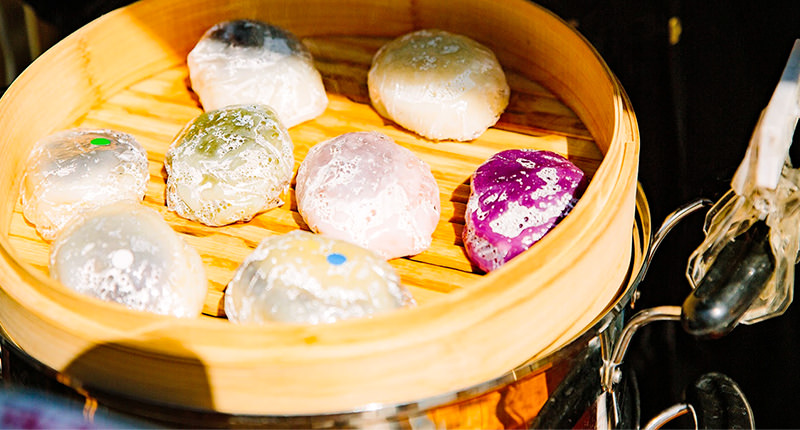
Ikinari Dango --- a traditional sweet
These days, Kumamoto has a fantastic range of sweets and desserts on offer that make use of local ingredients but trying the region’s traditional dessert is a must!
Ikinari dango are made by wrapping mashed sweet potato and adzuki bean paste in wheat flour dough, which are then steamed. Apparently, sweet potato used to be big business in this region back in the day, and ikinari dango used to be made with just sweet potato, meaning that adzuki is a more recent addition to the recipe.
Many would say they are best straight out of the steamer, they can also be enjoyed cold, reheated in a microwave or steamer, or baked in an oven.
Ikinari roughly translates as "all of a sudden", and the dessert is said to be so named as it's easy to prepare, and one can quickly whip up a batch to serve if guests were to suddenly show up.
Being a local specialty of Kumamoto, domestic tourists often buy them as souvenirs, so you’re bound to come across them around places popular with tourists.
Final thoughts
One of the best ways to really experience a local culture is through food. There are so many wonderful food options, desserts, and drinks available, and Kumamoto produces high quality fresh produce. The best thing to do when looking for something good to eat is to ask a local for their recommendation!